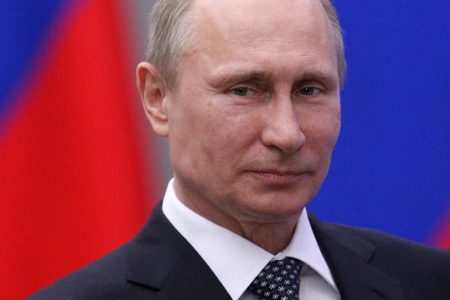Since its creation in 1949, NATO has been at many “crossroads” when its future was often seen in doubt. The most serious rift came in 1966. French President Charles de Gaulle, fearful of the risks of automatic nuclear escalation in the event of war with the Soviet Union and angered at what he saw as being treated with “second-class status,” withdrew the French military from the alliance.
De Gaulle mandated that all foreign troops and non-French nuclear weapons stationed in France leave along with the military headquarters that would move to Mons, Belgium, in 1967. Then-Secretary of Defense Dean Rusk pointedly asked de Gaulle if the expulsion included all the American military dead and buried under the French soil they gave their lives to defend.
In response to this withdrawal, as well as to dramatic improvements in Soviet strategic nuclear and conventional forces, NATO established a commission headed by Belgium Foreign Minister Pierre Harmel that would bear his name. Harmel’s charge was to devise a new strategy for NATO. The final report called for a dual track of negotiations with Russia and what would become a new military strategy of flexible response. The aim of flexible response was to deter Soviet aggression across the full nuclear and conventional spectrum of conflict.
Today, NATO faces a potentially greater challenge: making itself relevant in a 21st century world in which the old order is undergoing profound change. Put another way, as George H.W. Bush called the period immediately following the collapse of the Soviet Union in 1990 a “new world order,” the emerging era might be termed one of “no world order.” Surely, Russia’s intervention into Ukraine and annexation of Crimea in 2014 demolished the post-Cold War notion of the integrity of borders in Europe. And conflicts in Iraq, Libya, Syria, Yemen and elsewhere, exacerbated by radical and violent Islam, risk further escalation beyond flooding Europe with a massive flow of refugees.
In Europe, Brexit, the rise of populism and growing economic nationalism across the continent are direct threats to the future cohesion of European Union. So too, the election of President Donald Trump with his priority of “America first” creates the impression of a lessening of American leadership and engagement in this era of “no world order.” All these factors and forces are exploding around NATO.
Despite the reassuring words of Vice President Mike Pence and Defense Secretary Jim Mattis at the Munich Security Conference in late February pledging U.S. commitment and support of the alliance, friends and allies have not forgotten Trump’s description of NATO as “obsolete.” The further demands from Washington that nations honor the commitment to spend at least 2 percent of GDP on defense or face a slackening of American commitment likewise raise concerns among the 23 members who have not reached that goal – even though at the Wales NATO summit in 2014, NATO proposed a decade to obtain this level.
Complicating these circumstances is a growing “black hole” in NATO’s strategy. In total strength, NATO has substantial strategic nuclear and conventional military capabilities. The “black hole” however exists in what is termed non-kinetic or asymmetric advantages possessed by Russia. These include cyber and hacking capacity; misinformation and disinformation; propaganda; information war; intimidation; and espionage. Unfortunately, it is the individual NATO nations that are vested with responding to these asymmetric challenges rather than vesting responsibility on the alliance. It is for these reasons that a 21st century variant of the Harmel Commission must be created now.
A new strategy would have three components. The first is to declare, as Harmel did, a two-track policy of discussions with Russia to resolve the major grounds of disagreement. Second is to revise NATO’s strategy to focus on a “porcupine defense.” And third is to fill this black hole with alliance capabilities to counter and neutralize Russian non-military and asymmetric capabilities. Interestingly, each of these components of a new strategy is better resolved through brains rather than brawn or attempts to correct these shortfalls by spending alone.
Many areas are ripe for negotiation with Russia. Minimizing unintended incidents between Russian and NATO forces is important. Russian close-in surveillance of NATO warships and aircraft in international air and sea space could lead to an unfortunate encounter through mishap or miscalculation. A collision is but one possibility.
Because missile defense is a neuralgic matter with Russia, keeping the missile sites in Romania and Poland and withdrawing SM-3 missiles that could easily be returned as a quid pro quo for equivalent Russian actions to de-escalate military tensions is another. Putting limits on military exercises and especially no-notice Russian SNAP-ex drills is possible. These would be confidence-building measures.
A porcupine defense would focus on blunting and repelling a no-notice Russian military assault. Dependence on large numbers of anti-air and anti-armored vehicle missiles to stymie and bloody an attack is crucial. Using swarms of thousands of unmanned drones likewise could be a very real deterrent to any attack, especially one of short or little notice.
Third is the need to construct counters to the non-kinetic or non-military asymmetric forms of political intimidation and persuasion. Here NATO must put in place effective counters to cyber; political interference such as the hacking into the U.S. elections; propaganda; misinformation; disinformation; and other intimidating tactics. Specific teams with requisite capabilities could be readily dispatched to NATO member states as needed to deal with these and other unwanted intrusions.
In the past, NATO’s response to Soviet and Russian acts of aggression or intimidation has been military. Four battalions, for example, are being deployed to the Baltics and a Brigade Combat Team rotated in and out of Poland. Certainly, these forces reassure worried allies. However, these military forces do not have the capability to deal with the asymmetric and non-military threats that have created this new “black hole.”
As NATO coped with the end of the Soviet Union and devised a strategy that looked “out of area” as its strategic center of gravity, a fundamental shift is required now. Filling this “black hole” made by asymmetric dangers is essential. And it cannot wait.




